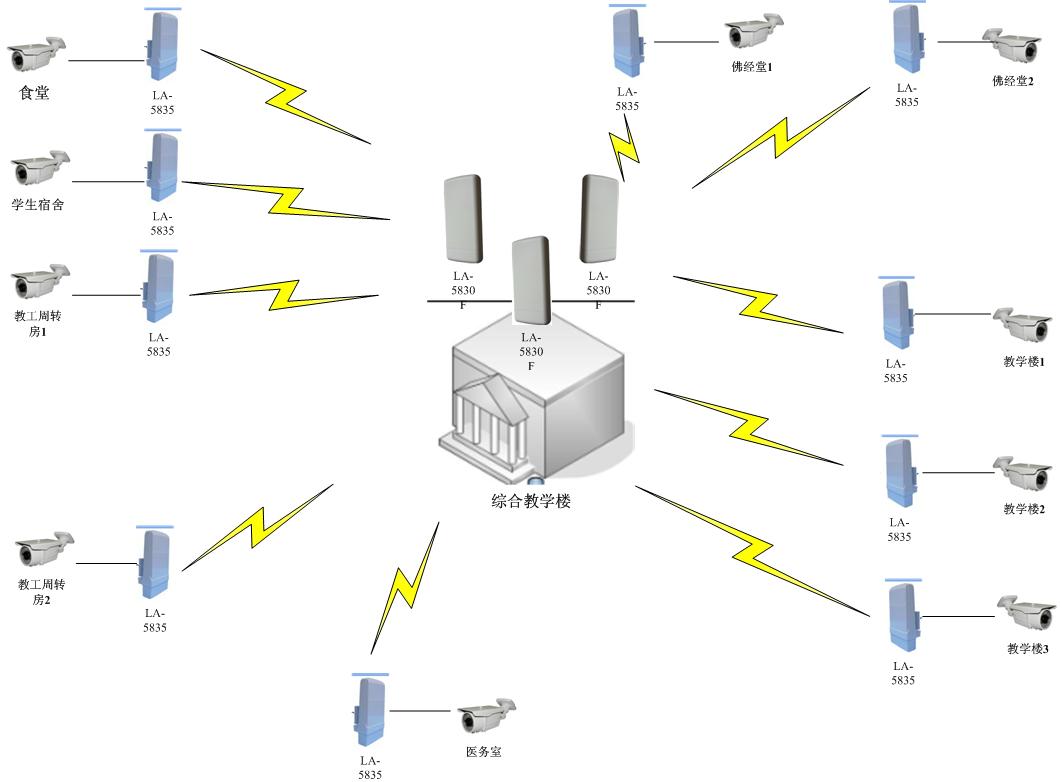In wireless surveillance systems, it is generally recommended to use directional antennas to transmit video signals. Within 10 km, it is recommended to use built-in directional antennas to achieve wireless video transmission. If over 10 km, it is recommended to use external high-gain directional antennas to achieve wireless video transmission. Omnidirectional antennas are generally used for wireless coverage, and the transmission distance is generally about one kilometer. It is also possible to use a directional transmission omnidirectional reception to set up a wireless monitoring system.
There are many types of antennas on the market, and the materials and technologies are not the same, so the difference in antenna gain is also great. The anti-ultraviolet material is added to the antenna housing material of our company's wireless bridge to prevent the equipment from cracking in the long-term sun exposure. The antenna bandwidth (700M), when multiple channels work at the same time, each channel is at the most Good working condition. The antenna has stable high-frequency performance, excellent electrical performance, and is also waterproof, with a wide range of outdoor temperature applications. It is widely used in point-to-point and point-to-multipoint remote wireless video surveillance and wireless coverage.

Stainless Steel Flange
A flange can also be a plate or ring to form a rim at the end of a pipe when fastened to the pipe. A blind flange is a plate for covering or closing the end of a pipe. A flange joint is a connection of pipes, where the connecting pieces have flanges by which the parts are bolted together.
Although the word flange generally refers to the actual raised rim or lip of a fitting, many flanged plumbing fittings are themselves known as 'flanges':
There are many different flange standards to be found worldwide. To allow easy functionality and interchangeability, these are designed to have standardised dimensions. Common world standards include ASA/ASME (USA), PN/DIN (European), BS10 (British/Australian), and JIS/KS (Japanese/Korean). In the USA, ANSI stopped publishing B16.5 in 1996, and the standard is ASME B16.5
Stainless Steel Round Tube Flange,Forged Stainless Steel Flange,Stainless Steel Welded Flange,Galvanized Stainless Steel Floor Flange
Yixing Steel Pole International Trading Co., Ltd , https://www.yx-steelpole.com